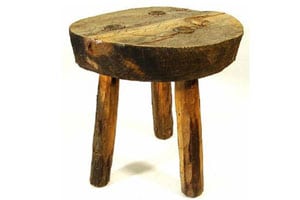Most management teams expect their departments and senior managers to be synergistic and achieve sales, profit and other goals set. However in practice are your relationships as good as they can be? Clearly at the heart of some of this is attitude.
Retail operations is often looked upon as maintaining the status quo and being inflexible. Merchandising is always chasing something new and not practical. I’ve used these extremes and stereotypes to make a point, to get you thinking about how you view each other.
My attitude is that without merchants, we don’t have a business. Without operations, shipping product companies don’t have sales. We need one another’s talents, and I think there are ways to work more diligently on improving relationships. Here are some examples.
Walking through a warehouse dedicated to ship-alone products, the operations director and I saw floor-stacked product which was leaning dangerously because cartons were being crushed from the weight of heavy products above. Several stacks had to be restacked, taking more floor space. At lunch with the merchant, there was a lot of pushback about increasing the tensile strength of cartons of heavier product. We also pointed out that the arriving customer order would look better if it didn’t appear crushed and possibly damaged.
In a warehouse assessment at another company, the operations director complained of last-minute notification from sales and the merchants about mandatory compliance for data interface with a new big box retail account they were wholesaling product to. The multichannel company had little choice but to create these interfaces, typical for big boxes, or lose the business. As I dug into the issue, the manager had six months to prepare, just like other departments. My point here is not so much the preparation period, but the fact that multichannel fulfillment businesses are changing rapidly with new selling channels, marketplaces, types of orders, compliance requirements, etc.
I hope you get the point. Here are some other areas where stronger relationships will help change processes.
Merchants, planners and marketers can help operations by sharing item projections or product plans. This data can help operations understand space requirements, how many “hot pick” areas are needed and a slotting strategy to make the warehouse more efficient. Some merchants may tell you their planning isn’t accurate. That may be true, but they have placed purchase orders for product. Working together, I believe they can find data that will assist operations.
Another process and policy change that requires a lot of cooperation between departments is developing vendor compliance. Merchants and purchasing are very concerned that compliance will mess up their relationships with the vendors. They complain they’re not big enough. But most companies can benefit from vendor compliance and adopt standards which most vendors will accept (e.g. transportation routing guides). The benefit to operations and the company is that when product arrives correctly it does not have to be reworked, marked or packaged. There will be direct dollar savings and you can speed product out to customers.
Companies can also benefit if operations is involved in the later stages when merchandising selects new product. I have seen cases where the new products look great but require special handling in the DC. Sometimes the product selected is not generally conveyable. I have also seen product like small tables that the company had not carried as a category. Every shipment required the legs to be wrapped with padding and shipped in a special sized carton. I would ask, can’t operations get a “look see” before merchandise arrives?
Here are a few more recommendations:
- Create a cultural that is intentional about sharing information and be synergistic across disciplines.
- As you work on strategic plans, look for points where departments are asked to seek each other’s input. The best example may be expansion of merchandise categories or the research benefits of vendor compliance.
- Live in the other gals or guys shoes. I have found some of the best merchants take time to go to the DC, understand the process and concerns and work returns to vendor (RTVs) periodically. This is especially true with outsourcing.
- I think we can go a long way if we think of the customer first. They are at the center of everything we do. In my ship-alone example above, some of those crushed cartons would have kicked off inquiries back to the call center about damages.
Think of these relationships as legs on a stool. A two-legged stool is difficult to sit on if one of them is missing or shorter than another.
Curt Barry is Partner and Founder of F. Curtis Barry & Company

